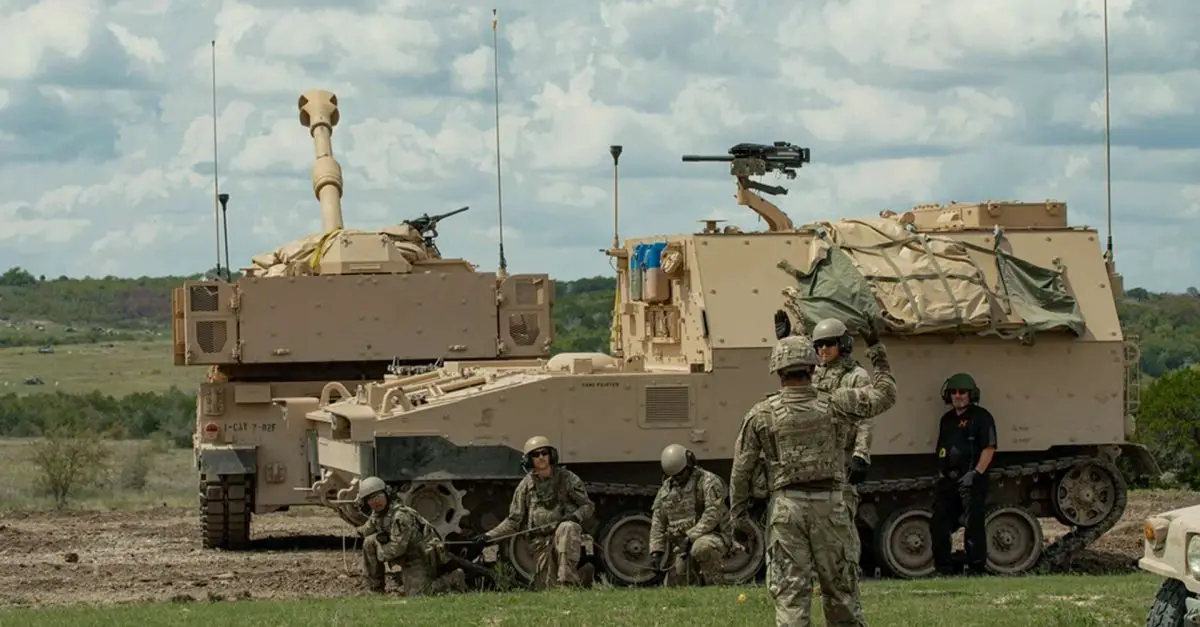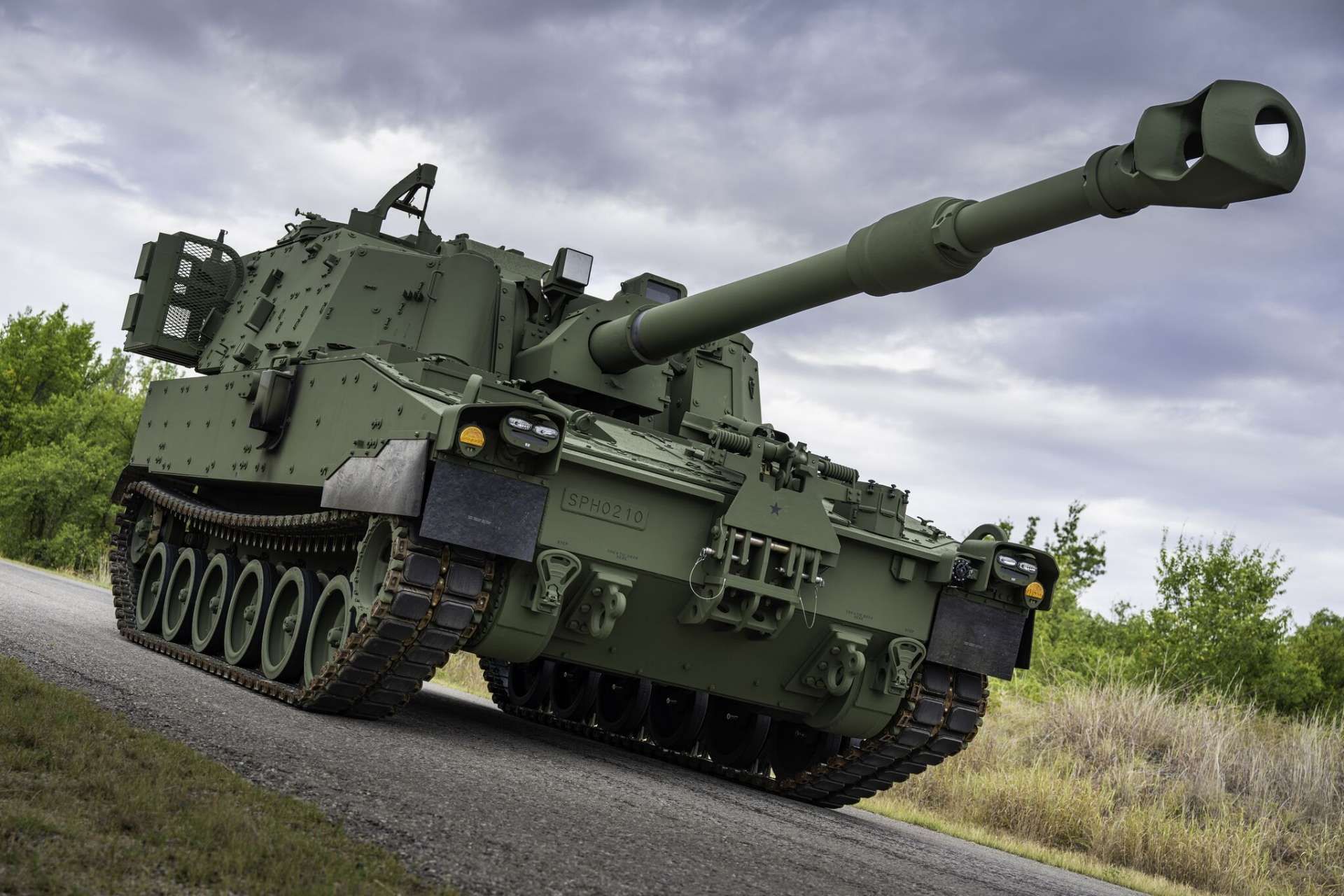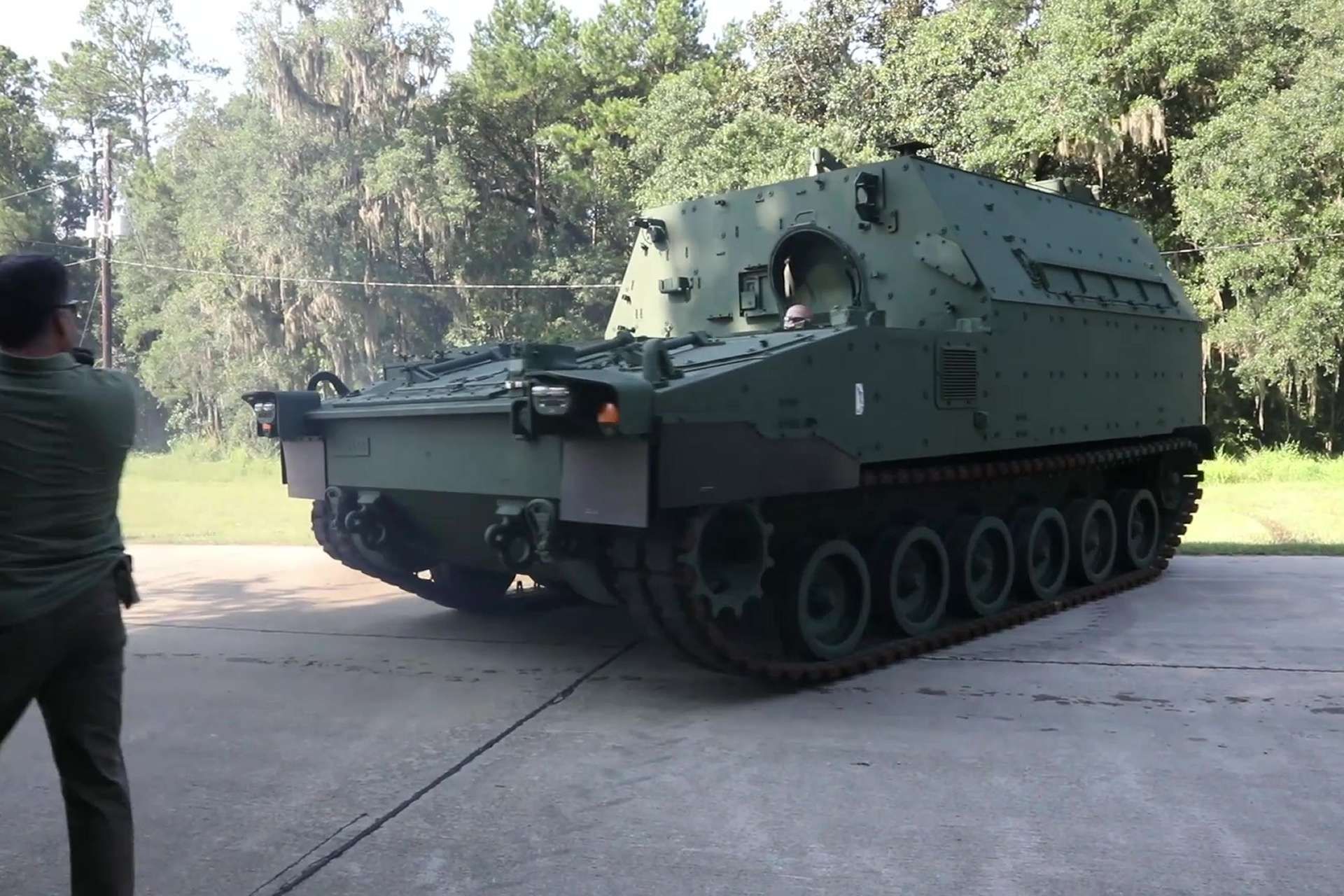Breaking News
BAE Systems to produce more M109A7 Paladin howitzers and M992A3 resupply vehicles for the US Army.
On July 3, 2024, BAE Systems was awarded a $579 million contract to produce M109A7 self-propelled howitzers and M992A3 resupply vehicles. This follows a $58 million contract awarded on May 17, 2024, for additional production of these models. These contracts align with the US Army's proposed upgrades for the M109 Family of Vehicles (FOV) and the Paladin Integrated Management (PIM) program, as outlined in the Fiscal Year 2025 budget, to ensure the M109 FOV remains integral to US armored and fire brigades.
Follow Army Recognition on Google News at this link

The PIM system includes two vehicles: the M109A7 self-propelled howitzer, which incorporates new system characteristics, and the M992A3 Carrier Ammunition Tracked (CAT), which shares components with the M109A7 but excludes those directly related to the cannon system. (Picture source: US DoD)
On July 3, 2024, BAE Systems Land and Armaments received a contract from the US Army valued at $579,309,813 for the production and delivery of M109A7 155mm self-propelled howitzers and M992A3 Carrier Ammunition Tracked (CAT) vehicles, along with fielding kits. The contract was awarded following an online solicitation process that yielded a single bid. The work is set to be performed at various locations within the United States, with completion expected by January 31, 2029. At the time of the award, $265,807,177 from fiscal years 2023 and 2024 Army funds for weapons and tracked combat vehicle procurement were obligated.
Earlier, on May 17, 2024, BAE Systems received a $57,585,343 contract modification to an existing contract from the US Army for additional production and delivery of these M109A7 and M992A3 vehicles. Funds from fiscal year 2023’s defense-wide operation and maintenance, along with weapons and tracked combat vehicle procurement, were fully obligated at the time of the award.
These two contracts align with the US Army’s proposed upgrades to the M109 Family of Vehicles (FOV) as part of its Fiscal Year 2025 budget. These modifications are part of the Paladin Integrated Management (PIM) program. The projected costs for these enhancements are $2,381.612 million for the M109 FOV modifications and $10,771.787 million for the PIM program. The purpose of these programs is to enhance the operational readiness, safety, and performance of the M109 FOV fleet and address various capability gaps and obsolescence issues.

The M109A7, also known as the Paladin Integrated Management (PIM) upgrade, features several improvements over its predecessor, the M109A6, including a new chassis, engine, transmission, and suspension system. (Picture source: BAE Systems)
The first program includes several modifications aimed at improving the M109 Family of Vehicles, specifically the M109A6 and M109A7 Self-Propelled Howitzers and the M992A2 and M992A3 Field Artillery Ammunition Supply Vehicles. These changes align with the US Army’s Long-Range Precision Fires modernization priorities. The modifications include engineering design, testing, hardware procurement, and application to resolve field-identified issues, aiming to maintain operational readiness rates, enhance safety, and integrate new equipment.
Program management will extend across various units and facilities, including 16 Active Duty Army and National Guard Battalions, 10 Army Fires Brigades, three Rotational unit sets, four Army Prepositioned Stock sets, two Institutional Training Sites, two Combat Training Centers, and other associated facilities. Planned improvements include the Interior Blast Mitigation Retrofit for the M109A7, which involves installing improved floor mats and ammunition restraints to prevent secondary projectiles during underbody blasts. The Chief of Section Protection modification introduces ballistic risers and transparent armor to enhance situational awareness and personnel survivability. Additionally, the Ventilation System Dust Cover modification incorporates a pre-filtration design to prevent system clogs, and the SPH Crew Compartment Automated Fire Extinguishing System Retrofit extends fire suppression coverage to the entire crew compartment.
Other modifications involve redesigning the driver’s seatbelt and hatch to improve restraint reliability and reduce leaks, enhancing vehicle safety and usability. The Universal Mounting Bracket hardware modification supports current and future inertial navigation units, and the AFES Control Electronics Panel modification updates software and firmware for enhanced compatibility. Funding will also support hardware procurement necessary for executing these Modification Work Orders and ensuring equipment readiness, with program management overseeing configuration management, field data analysis, and developing strategies to address supply base shrinkage.

The M992A3, the latest variant of the FAASV, includes a new powertrain, an improved suspension system, advanced digital systems for inventory management, and improved ergonomics for the crew, allowing it to carry 93 rounds of 155 mm ammunition. (Picture source: US DoD)
These modifications to the M109 FOV are part of the US Army’s broader effort to modernize its fleet of self-propelled howitzers and associated resupply vehicles. The Paladin Integrated Management (PIM) program, designated as an Acquisition Category IC Major Defense Acquisition Program, aims to ensure the M109 FOV remains integral to armored and fires brigades. The PIM program involves replacing the current M109 Family of Vehicles, specifically the M109A6 and M992A2, with the newer M109A7 and M992A3 models.
The PIM system includes two vehicles: the M109A7 SPH, which incorporates new system characteristics, and the M992A3 CAT, which shares components with the M109A7 but excludes those directly related to the cannon system. These vehicles will replace the existing M109 FOV on a one-for-one basis within cannon fire battalions in the Armored Brigade Combat Team formations and in Echelons Above Brigade. Fielding will continue until the Army Acquisition Objective of 689 sets is achieved.
The PIM program addresses capability gaps left by the termination of the Non-Line of Sight Cannon program in June 2009. It resolves obsolescence and issues related to size, weight, and power in the current M109 FOV fleet. The vehicles under the PIM program integrate the suspension and drivetrain of the Bradley Fighting Vehicle, electric gun drive systems from the Future Combat Systems program, and current armament systems into a new chassis. This integration provides improvements in force protection, survivability, and mobility over the M109A6 and M992A2 models.
The FY 2025 budget justification documents outline procurement quantities and costs from previous years through FY 2029. The procurement summary indicates that 349 units were procured in prior years at a cost of $4,312.275 million. In FY 2023, 46 units were procured at a total cost of $1,009.489 million. For FY 2024, 24 units are planned, budgeted at $469.152 million, and for FY 2025, 20 units are planned with a budget of $417.741 million. The total program cost through FY 2029 is projected to be $10,771.787 million for 679 units.

The North Carolina National Guard’s 1st Battalion, 113th Field Artillery Regiment was the first National Guard unit to receive the M109A7 self-propelled howitzer in 2021. (Picture source: US DoD)
The M109 Paladin is an American 155 mm self-propelled howitzer that was introduced in the early 1960s to replace the M44. Developed by the Ground Systems Division of United Defense (now part of BAE Systems), the M109 has become a standard Western indirect-fire support weapon for maneuver brigades of armored and mechanized infantry divisions. The initial model featured a 23-caliber barrel and was capable of firing various types of 155 mm ammunition. The M109 series has undergone multiple upgrades, enhancing its range, firepower, and operational capabilities. It has seen deployment in conflicts such as the Vietnam War, the Yom Kippur War, the Iran-Iraq War, the Gulf War, and the Iraq War.
The M109A7, also known as the Paladin Integrated Management (PIM) upgrade, is the latest version of the M109 series. It features several improvements over its predecessor, the M109A6, including a new chassis, engine, transmission, and suspension system. The M109A7 is powered by a Cummins V903 engine producing 503 kW, compared to the 328 kW engine in the M109A6. It also includes an upgraded electric ramming system and advanced digital fire control systems, enhancing its rate of fire and accuracy. The M109A7 has an operational range of approximately 300 kilometers and a top speed of 61 km/h.
The M992 Field Artillery Ammunition Support Vehicle (FAASV) was developed to support the M109 howitzer by transporting ammunition. Introduced in the early 1980s, the M992 was designed to improve the efficiency of artillery units by ensuring a steady supply of ammunition directly to the front lines. The M992 is built on the same chassis as the M109, ensuring compatibility and ease of maintenance. The vehicle includes storage racks for ammunition, a conveyor system for rapid resupply, and a crane for handling heavy projectiles.
The M992A3 is the latest variant of the FAASV, featuring several upgrades over its predecessors. It includes a new powertrain and improved suspension system, enhancing its mobility and reliability in various terrains. The M992A3 also incorporates advanced digital systems for inventory management and improved ergonomics for the crew. It can carry 93 rounds of 155 mm ammunition and efficiently resupply the M109 howitzer under combat conditions. These enhancements ensure the M992A3's role in maintaining sustained firepower and operational effectiveness in modern artillery units.


























